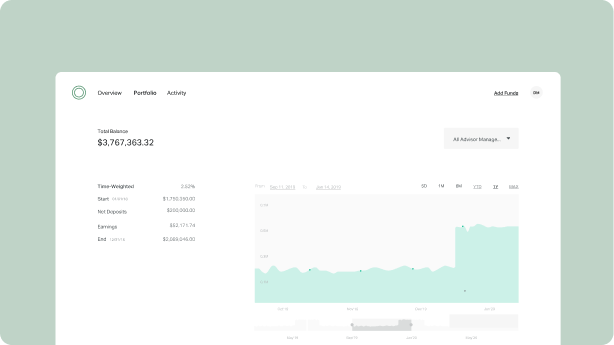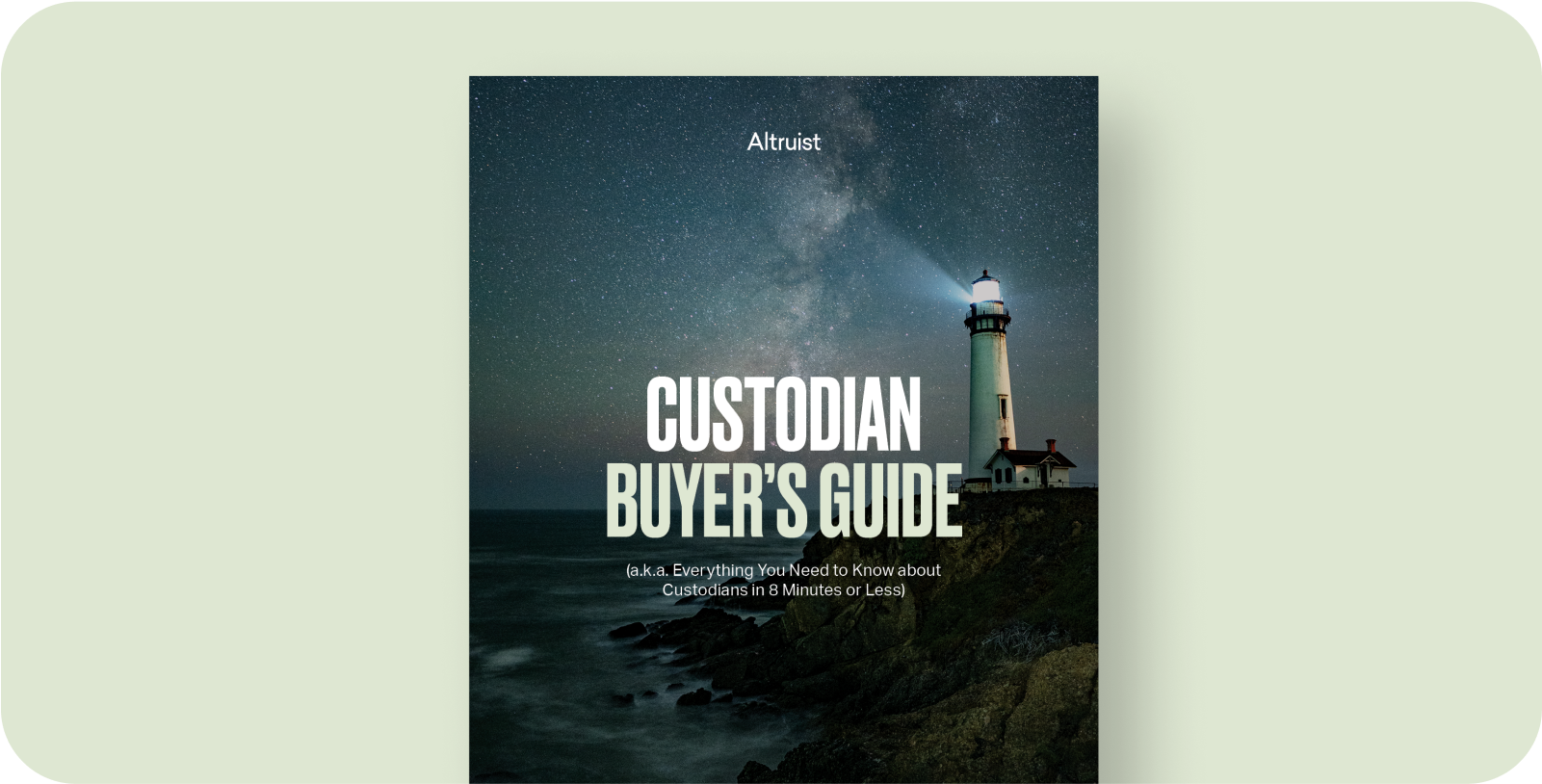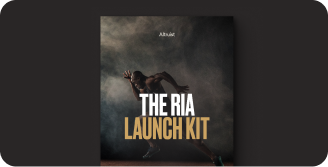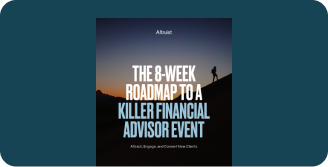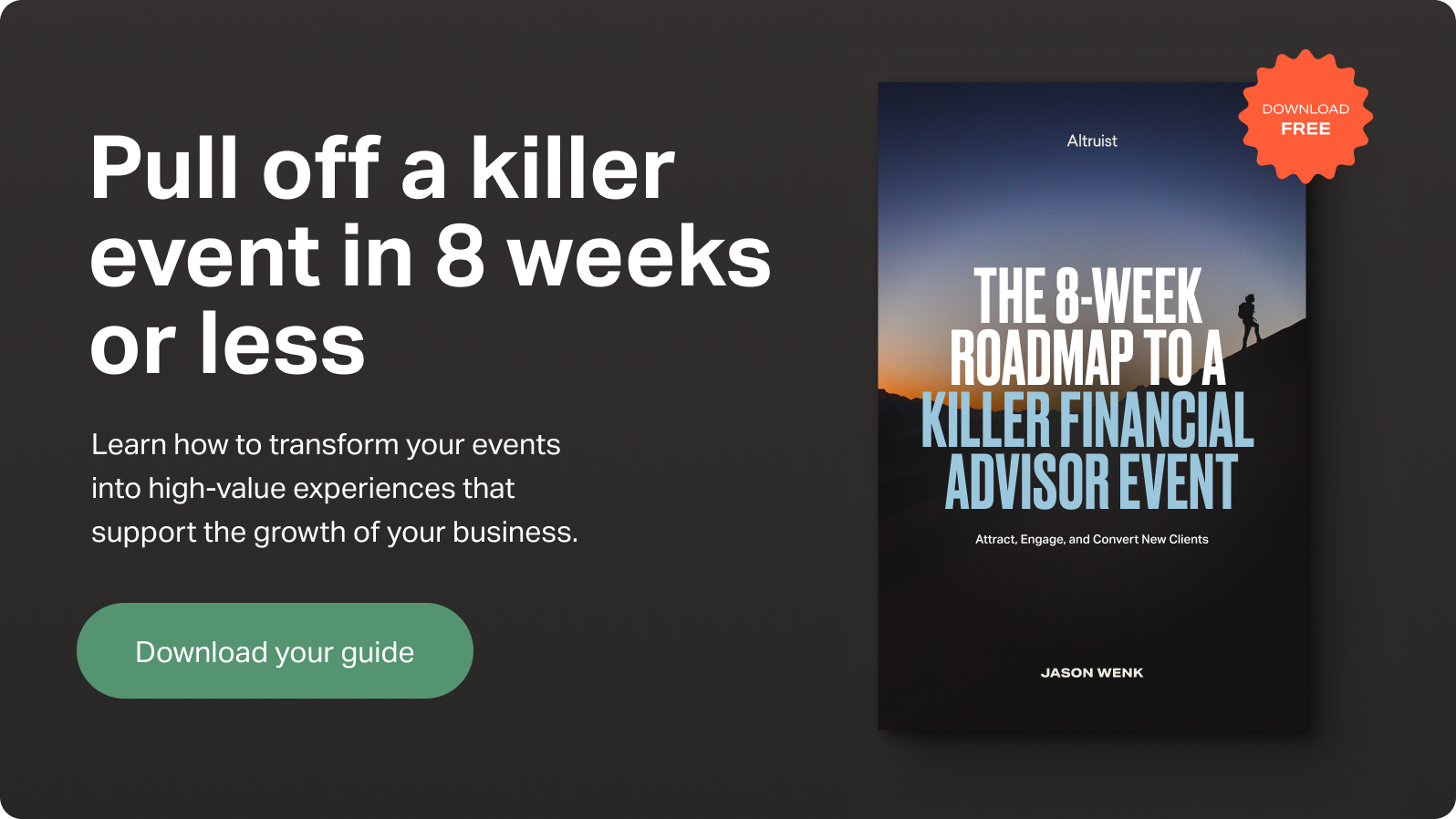Go beyond digital screens and show your audience a human side. Offline marketing enables advisors to hyper-focus on their target demographic, serving personalized content to attract the clients they desire to work with.
This 7-minute guide contains actionable steps from developing a solid marketing plan to exploring offline channels that help you engage and retain the right clientele.
Where to start
Create a marketing plan
The purpose of a marketing plan is to serve as the core of your overall marketing strategy. A marketing plan should define your brand, setting expectations and parameters around design, messaging, mission, and ethos–ensuring a cohesive look and feel throughout your campaigns.
Essential features of a marketing plan for financial advisors include:
- Define your target marketing: Create a plan explicitly addressing prospect pain points and challenges by identifying your target audience.
- Define your value proposition: How do you differ from other firms and advisors? It’s likely other firms offer the same services you do, but how you explain it makes the difference. Your value proposition should be communicated in one concise statement. You will use this in your messaging to your target audience.
- Select marketing channels to share your brand and tailored messaging: A well-rounded marketing plan may include a variety of marketing channels, such as SEO, social media, your website, email marketing, content marketing, direct mail, networking events (seminars and conferences), and referral programs.
The marketing channels you choose to pursue will be unique to your plan. Keep reading to learn more about offline marketing and learn more about digital marketing in this extensive guide.

Offline marketing channels for financial advisors
Direct mail
According to NerdWallet, 70% of consumers consider snail mail more personable than email. Snail mail allows advisors to get directly into the hands of their target audience without the worry of a spam filter. Equally relevant, snail mail has a higher response rate than email: averaging 9% for prospect lists versus the national average (all industries) of 1% for email.
How to capture attention in direct mail
Many marketers use the AIDA method to grab attention and inspire action. Advisors can use this method too.
A: Attention: Captivating headline
Within a few seconds, you must capture your prospect’s attention. The headline(s) must be insightful and relevant to the recipient. Use bold print and increased font to make your message stand out.
I: Interest: Keep them hooked
Once you’ve captured their attention, you must give them a reason to keep reading. Including specific details related to their needs and challenges will help you establish trust (because you understand what they’re going through).
D: Desire: Inspire action
In other words, what’s in it for them? Incentivizing them with an attractive offer will get them to follow through with the call to action. Simply offering a free retirement consultation can do the trick.
To add a sense of urgency, add a time limit. For example: “Book in the next two weeks to get your FREE retirement assessment–no commitment required.”
A: Action: Connect with you
The call to action must be front and center. Keep it short and avoid making it complicated.
Learn more about direct mail marketing, including the three best direct mail types for financial advisors.
Events
A well-executed event can garner quality leads for financial advisors. It can also foster existing client relationships (with a gentle nudge to bring their friends to an event). It’s a low-pressure environment for advisors and their target audience–allowing everyone to connect and be themselves.
Types of events for financial advisors
In-person demonstrations
Make a lasting impression by offering an in-person demonstration of your products/services. This setting allows you to showcase your expertise while giving your audience the space to explore and ask questions–establishing trust and credibility.
Networking events
Alex Newman, Grape Wealth Management, discovered his retired clients struggled to make friends in the city they live in. Hearing this, Alex decided to host a tailored event for his clients to meet other retirees in the area. As a result, Alex added $17M in AUM to his firm in just five months. There's no talk of business or financial services–it’s just a fun event to get to know people organically.
Educational workshops
Wes White, Patriot Wealth Management, hosts free educational workshops for their target demographic. Similar to Alex, Wes doesn’t promote his firm or services at the workshops. Instead, the focus is addressing topics and concerns affecting retirees–helping them build confidence in their financial journey. This educational workshop has helped Patriot Wealth Management grow its AUM by over $85M.
Client appreciation events
Most events are focused on prospects, but advisors should spend a little time spoiling their existing clients. Hosting a client event allows them to catch up in person without a corporate tone they might be accustomed to. You can even ask them to invite their friends to come along (referral marketing)–especially if you’re hosting a happy hour or a bbq.
There’s more to uncover with events, and this helpful guide walks you through the planning process so you can execute a memorable event for your audience.

Referral marketing
58% of high-net-worth people say they found their advisor through a referral, yet less than 20% of advisors report asking for referrals consistently. To further prove the effectiveness of referrals, Yohance Harrison, Money Script Wealth Management, added over 300 households and AUM –all stemming from one client referral.
While asking your clients for referrals may feel awkward, don’t let that hold you back. Below are a few helpful tips to give you confidence.
Create a referral script
Advisors discovered that working the referral question into client meetings is an easy way to request a referral. Yohance memorized his referral script and said he uses it with “anyone willing to listen.”
Here’s his script:
“Did you enjoy the time we had today? A lot of people I talk to find that to be true as well. If you have a moment, I’d like to ask you one last question. As a financial advisor, my goal is to create a referral-based practice, and I do that by getting referrals from individuals who enjoy me and enjoy the process. So, if you like, I’d like to brainstorm a little bit to see if we can think of any individuals who might be open to this.”
Know when to ask for a referral
Not every client is suitable to ask for a referral–so use your best judgment. To help you decipher who might be best, it’s as simple as looking at your happiest customers.
If you have a great relationship with your client, and they’re satisfied with your work, they may be ideal for referring clients to you. The best way to ask them might be at the end of a meeting. Yohance suggests keeping the ask short and sweet, such as: As you know, I specialize in [insert specialty]. Do you know anyone who can use my help?”
Want further inspiration about launching a referral marketing strategy? Look at this in-depth article that explores more ways to ask for a referral and what to do after you get the referral.

Conclusion
Bookmark this guide as we aim to update it with more helpful information periodically.


